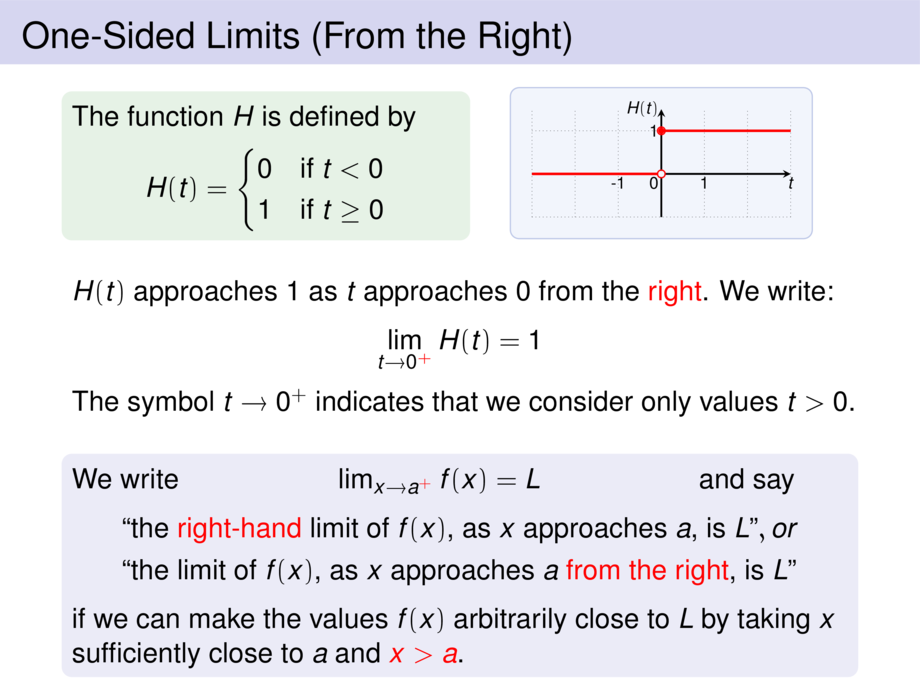



































































































80/154
\begin{frame}
\frametitle{One-Sided Limits (From the Right)}
\begin{minipage}{.5\textwidth}
\begin{exampleblock}{}
The function $H$ is defined by
\begin{talign}
H(t) = \begin{cases}
0 & \text{if $t < 0$}\\
1 & \text{if $t \ge 0$}\\
\end{cases}
\end{talign}
\end{exampleblock}\vspace{.5ex}
\end{minipage}~\quad~
\begin{minipage}{.49\textwidth}
{\def\diax{t}\def\diay{H(t)}
\scalebox{.6}{
\begin{tikzpicture}[default]
\diagram{-3}{3}{-1}{1.5}{1}
\diagramannotatez
\diagramannotatex{-1,1}
\diagramannotatey{1}
\draw[cred,ultra thick] plot[smooth,domain=-3:0,samples=20] function{0};
\draw[cred,ultra thick] plot[smooth,domain=0:3,samples=20] function{1};
\def\x{0}
\def\y{{1}}
\node[include={cred}] at (\x,\y) {};
\node[exclude={cred}] at (0,0) {};
\end{tikzpicture}
}}
\end{minipage}
\medskip\pause
$H(t)$ approaches $1$ as $t$ approaches $0$ from the \alert{right}.
We write:
\begin{align*}
\lim_{t\to0^{\alert{\boldsymbol{+}}}} H(t) = 1
\end{align*}
The symbol $t\to0^{+}$ indicates that we consider only values $t > 0$.\hspace*{-2ex}
\bigskip\pause
\begin{block}{}
We write \hspace{2cm} $\lim_{x\to a^{\alert{+}}} f(x) = L$ \hspace{2cm} and say
\begin{talign}
&\text{``the \alert{right-hand} limit of $f(x)$, as $x$ approaches $a$, is $L$''}, or \\
&\text{``the limit of $f(x)$, as $x$ approaches $a$ \alert{from the right}, is $L$''}
\end{talign}
if we can make the values $f(x)$ arbitrarily close to $L$ by taking $x$ sufficiently close to $a$ and $\alert{x > a}$.
\end{block}
\end{frame}

